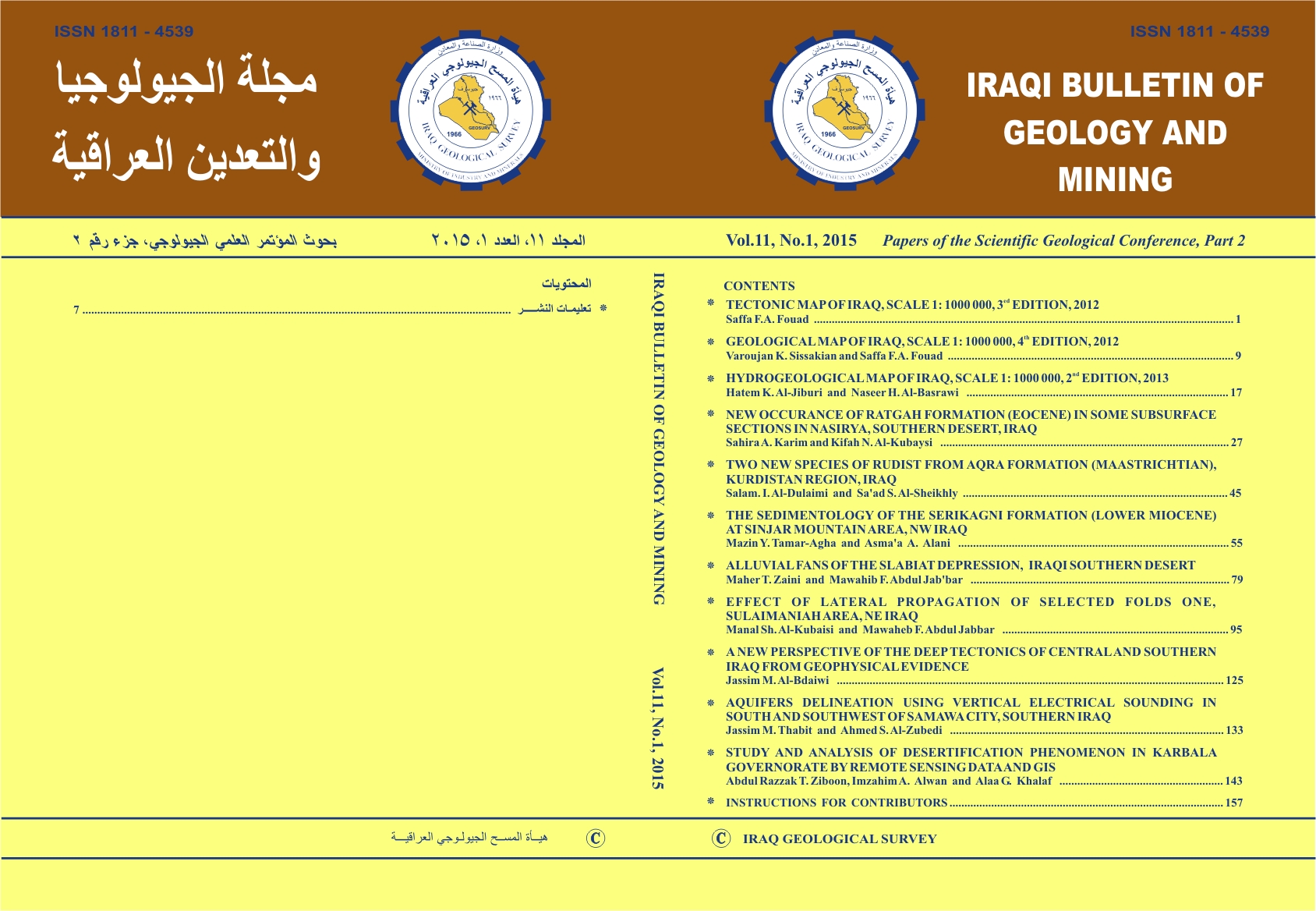Abstract
The first tectonic map of Iraq of the scale 1: 1000 000 was published in 1984 by the Iraq Geological Survey (GEOSURV) with the assistance of some Czech experts (Buday and Jassim, 1984). The map relied basically on the old principles of the geosynclinal theory which was used to visualize the regional tectonics of Iraq. Later on in the year 1997, GEOSURV has updated the map to introduce the second edition of the tectonic map (Al-Kadhimi et al., 1997). The general framework of the second edition map is based on that of the first edition, but the details were heavily relied on gravity and magnetic geophysical data. The result was a very complicated map in which the regional tectonic zones were subdivided into smaller and smaller subzones that in sometimes contradict with each other or impossible to justify.
In recent years, however, a new tectonic map that kept pace with the present day tectonic aspects and perspective of the area and the surrounding region was in high demand by many geological institutes, universities and exploration companies. Consequently GEOSURV updated and compiled the available new geological data to introduce the third edition of the tectonic map.
In recent years, however, a new tectonic map that kept pace with the present day tectonic aspects and perspective of the area and the surrounding region was in high demand by many geological institutes, universities and exploration companies. Consequently GEOSURV updated and compiled the available new geological data to introduce the third edition of the tectonic map.
Keywords
Iraq
structure
Tectonics
